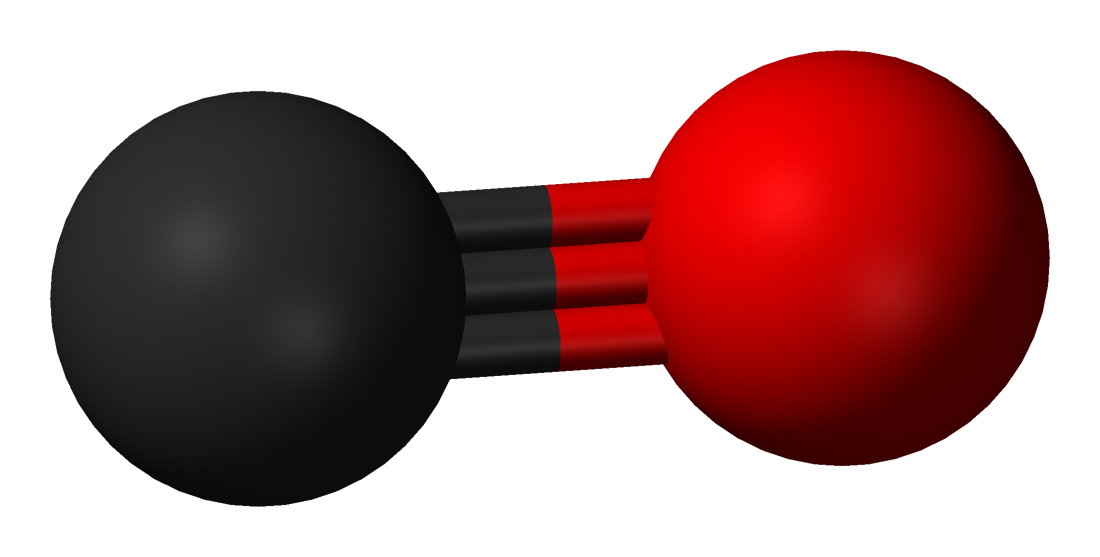Carbon monoxide in Washington's air
We, along with local clean air agencies, monitor the air to make sure carbon monoxide is within healthy standards. Today, all areas of Washington meet the carbon monoxide air quality standard.
Past levels of carbon monoxide exceeded national standards in parts of Seattle, Tacoma, Vancouver, Yakima, and Spokane. Cleaner motor vehicles and fuels greatly reduced carbon monoxide emissions.
A model of a carbon monoxide molecule.
Carbon monoxide
Carbon monoxide is an odorless, tasteless, colorless gas emitted by any form of combustion. Common sources are:
- Motor vehicles
- Wood stoves and fireplaces
- Outdoor burning
- Industrial combustion
Carbon monoxide in Washington
In the late 1970s through early 1990s, carbon monoxide levels in some of Washington's urban areas were high enough to violate national standards. Parts of Seattle, Tacoma, Everett, Vancouver, Spokane, and Yakima were not meeting the carbon monoxide standard. This is called nonattainment.
Along with our local partners, we acted on plans to bring carbon monoxide back to healthy levels. Part of the plan was an emission check program that identified high-polluting vehicles so they could be fixed. The most significant reductions came from tighter emission standards for motor vehicles. As older polluting cars were scrapped, they were replaced with newer, cleaner vehicles. By 2004, all areas in Washington met the national standard and were considered in attainment for carbon monoxide levels.
Maintaining clean air
Thanks to cleaner cars, Washington's carbon monoxide levels remain low. To make sure the air continues to meet the air quality standard, Ecology and local partners monitor air and plan for the future. Today, we monitor carbon monoxide at:
- Two locations in Seattle representing urban and near-road conditions.
- One location on the Olympic Peninsula representing background (or natural) conditions.
Levels in Washington are much lower than the standard, so there isn't a need for a larger carbon monoxide monitoring network.
What you can do
Protect your health from the effects of carbon monoxide:
- Keep the furnace vent (oil or gas) clear.
- Run an engine (like your car or a generator) only if a window or door is open.
- Keep fireplaces clean and well vented.
- Install and maintain carbon monoxide alarms in your home; check the battery.
- Drive a cleaner vehicle.
- Try alternatives to burning yard waste.
Carbon monoxide is not known as a direct contributor to climate change. However, it persists in the atmosphere for about a month and can be transported long distances.
Exposure to carbon monoxide interferes with the blood’s capacity to carry oxygen. People with existing heart problems may be more at risk to carbon monoxide's effects.
Dangerously high levels aren't likely to occur outdoors. However, combustion within poorly ventilated spaces can cause levels high enough to cause death.
Learn more about health concerns of exposure to carbon monoxide indoors.
Related links
Contact information
Anya Caudill
Environmental Planner
anya.caudill@ecy.wa.gov
360-791-5499


